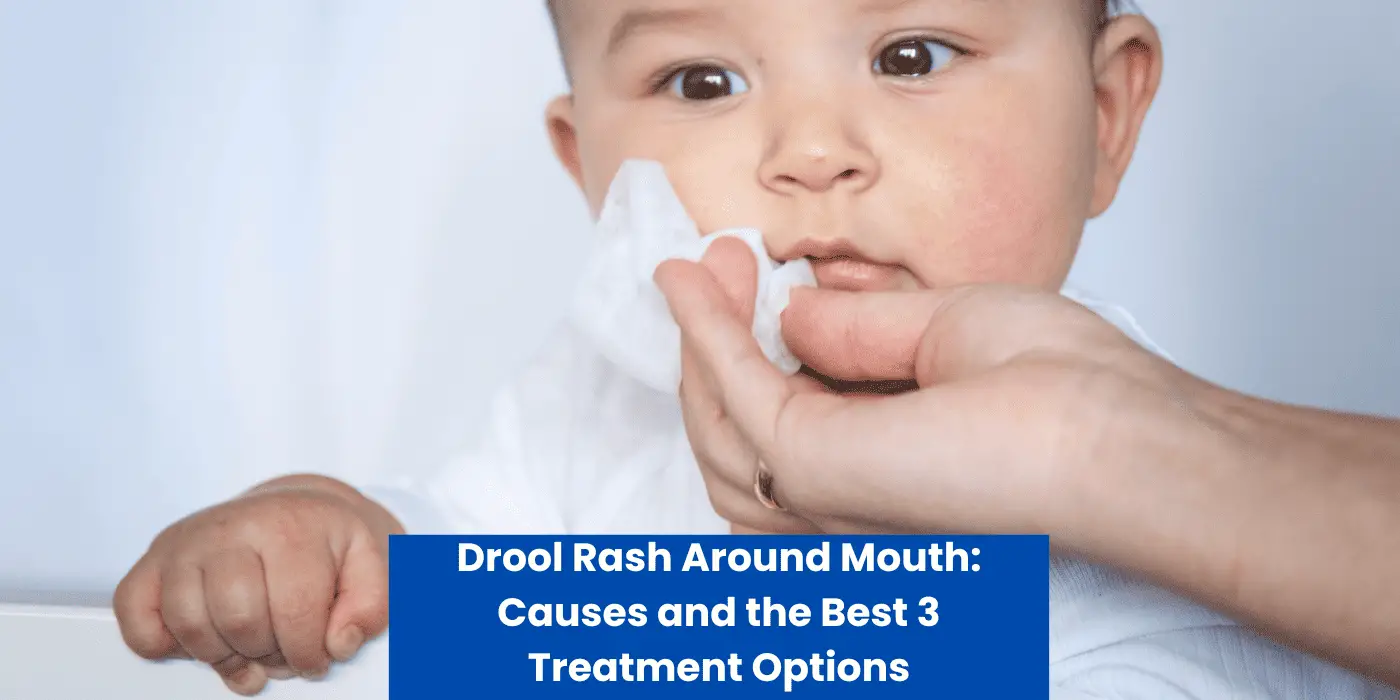Drool rash around the mouth is a common skin condition that affects infants and young children. It occurs when excessive drooling causes irritation and inflammation of the skin around the mouth, chin, and cheeks, sometimes extending to baby’s chest.
This type of rash can be uncomfortable and unsightly, often appearing as slightly raised patches, but it is usually not serious and can be easily treated.
Drool rashes typically present as red, raised bumps that may be accompanied by dry, flaky skin. In severe cases, the skin may become cracked and bleed and baby’s rash can extend to baby’s neck and chest.
While drool rash can be caused by excessive drooling, it can also be triggered by other factors such as teething, allergies, or irritation from saliva-contaminated objects. It is important to identify the underlying cause of the rash to effectively treat it.
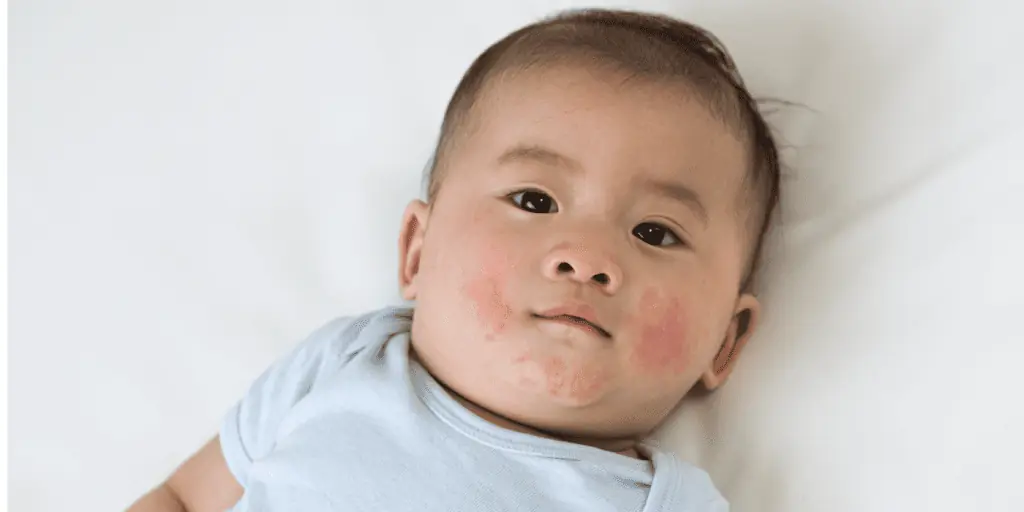
Causes
Drool rash is a common skin condition that affects infants and toddlers. It is caused by excessive saliva on the skin, which can lead to irritation and inflammation. Here are some of the most common causes of drool rash:
Excessive Drooling
One of the most common causes of drool rash is excessive drooling. Babies and toddlers produce a lot of saliva, especially when they are teething or experiencing other oral issues.
When this saliva comes into contact with the skin around the mouth and chin, it can cause irritation and inflammation.
Teething
Teething is another common cause of drool rash. When babies start to teethe, they often produce more saliva than usual. This excess saliva can cause irritation and inflammation on the skin around the mouth and chin. A frozen teething ring can provide some relief.
In addition, babies who are teething may also be more prone to putting their hands, teething ring and toys in their mouth, which can further aggravate the skin.
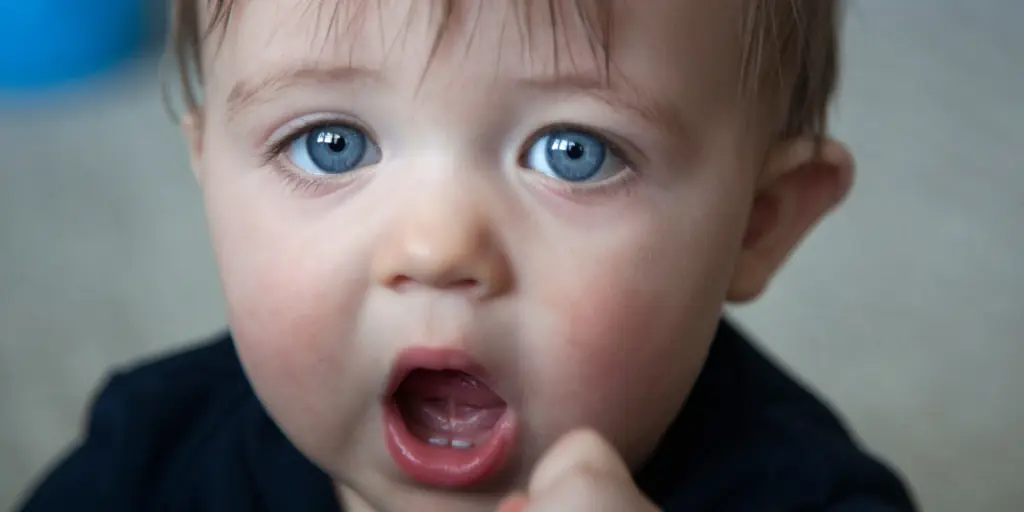
Allergic Reaction
In some cases, drool rash may be caused by an allergic reaction. Some babies and toddlers may be allergic to certain foods or substances, such as detergents, scented lotions or baby wipes.
When these substances come into contact with the skin, they can cause an allergic reaction that leads to drool rash.
It is important to note that drool rash is not contagious and cannot be spread from one person to another. If your baby or toddler is experiencing drool rash, it is important to take steps to treat and prevent it from getting worse.
Symptoms
A drool rash is a type of contact dermatitis caused by saliva. The skin around your baby’s mouth and/or chin may become inflamed and irritated. Here are some common symptoms of drool rash:
Redness
The affected area may appear red and irritated. This is due to the inflammation caused by the saliva. The skin may also feel warm to the touch.
Swelling
In some cases, the affected area may become swollen. This is due to the body’s immune response to the saliva. The swelling may be mild or severe, depending on the severity of the rash.
Itching
The affected area may be itchy, causing your baby to scratch or rub their face. This can make the rash worse and may lead to secondary infections. It is important to keep your baby’s nails trimmed to prevent them from scratching their skin.
If you notice any of these symptoms, it is important to take action to prevent the rash from getting worse. In the next section, we will discuss some treatment options for drool rash.
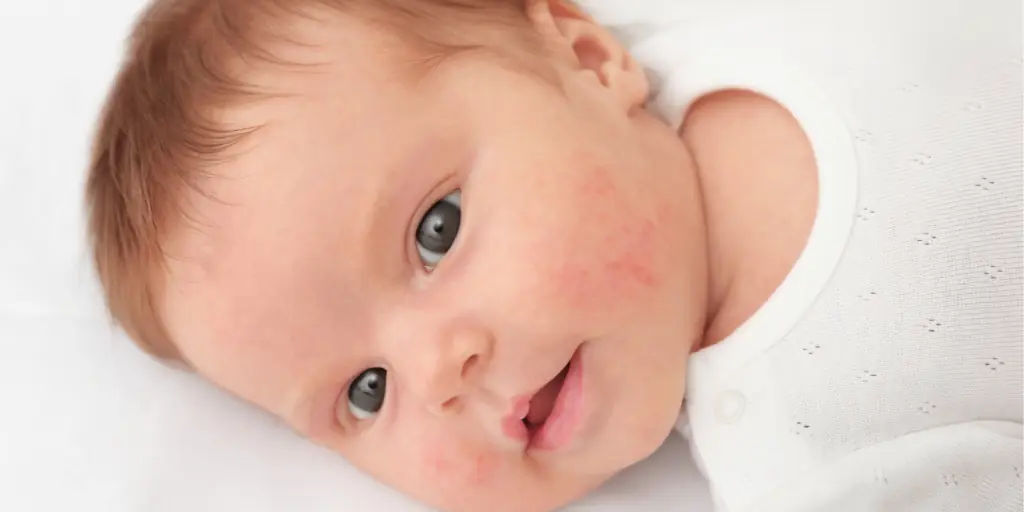
Treatment
Home Remedies
Keeping your baby’s skin clean and dry is the most effective remedy against drool rash. Wipe your baby’s face and in the folds of their neck frequently, and especially after feedings.
Use a soft, clean cloth and avoid rubbing the skin too hard. You can also try the following home remedies:
Apply a gentle, fragrance-free moisturizer to the affected area.
Use a barrier cream, such as petroleum jelly, to protect the skin from moisture.
Apply a cool compress to the rash to soothe the skin and reduce inflammation.
Use a humidifier to keep the air moist and prevent the skin from drying out.
Over-the-counter Medications
If home remedies are not effective, you can try using over-the-counter medications to treat drool rash. The following products may be helpful:
Hydrocortisone cream: An anti-inflammatory cream that can reduce itching and inflammation on sensitive skin.
Calamine lotion: A soothing lotion that can relieve itching and dry out the rash.
Zinc oxide cream: A barrier cream that can protect the skin from moisture and reduce inflammation.
Prescription Medications
If the rash is severe or does not respond to home remedies or over-the-counter medications, your doctor may prescribe a prescription medication. The following medications may be helpful:
Topical corticosteroids: These creams or ointments can reduce inflammation and itching.
Antibiotics: If the rash is infected, your doctor may prescribe an antibiotic to clear up the infection.
Immunomodulators: These medications can reduce inflammation and prevent the immune system from overreacting.
How to Prevent a drool rash around baby’s Mouth
Baby’s drool rash can be prevented by taking some simple steps to keep your baby’s skin clean and dry. Here are some ways to prevent drool rashes:
Keep Baby’s Skin Clean and Dry
Keeping your baby’s skin dry is the most important step in preventing drool rash. Use a soft cloth to gently wipe away any drool around your baby’s mouth and chin.
You can also use a bib to absorb any saliva and prevent it from coming into contact with your baby’s skin. Change the bib frequently to keep it dry.
Make sure to pat your baby’s skin dry after wiping away any drool. Avoid rubbing the skin, as this can cause irritation and make the rash worse.
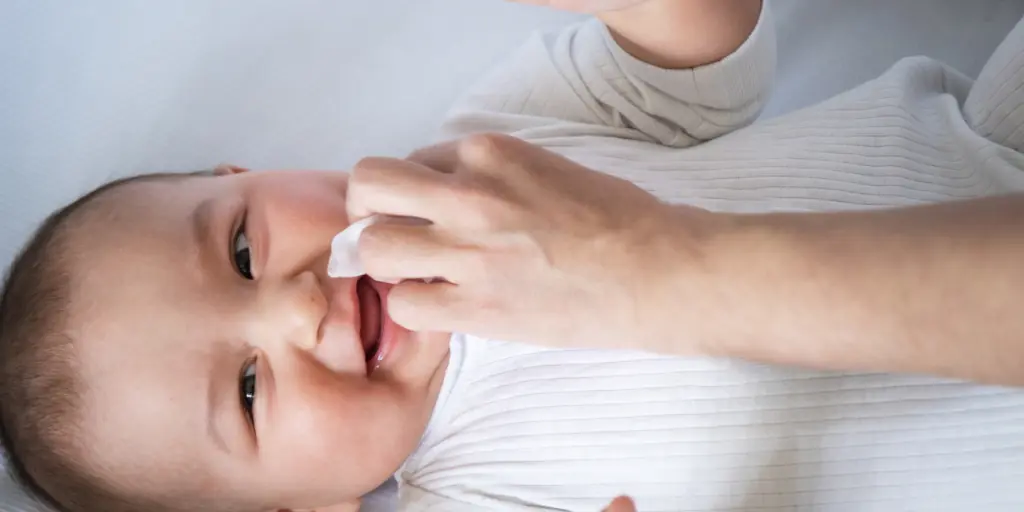
Use Moisturizer on Baby’s Drool Rash
Applying a moisturizer can help prevent drool rash by keeping your baby’s skin hydrated. Choose a moisturizer that is gentle and free of fragrances and other irritants.
Apply the moisturizer to your baby’s skin after patting it dry.
Be careful not to apply too much moisturizer, as this can make the skin too oily and lead to further irritation.
Avoid Irritants on Baby’s Skin
Avoid using products that can irritate your baby’s sensitive skin, such as harsh soaps, lotions, and detergents. Choose products that are gentle and free of fragrances and other irritants.
Also, in order to minimize drool rash, avoid using any clothing or fabrics that can irritate your baby’s skin, such as wool or synthetic materials. Stick to soft, breathable fabrics like cotton.
By following these simple steps, you can help prevent drool rash and keep your baby’s skin healthy and comfortable.

